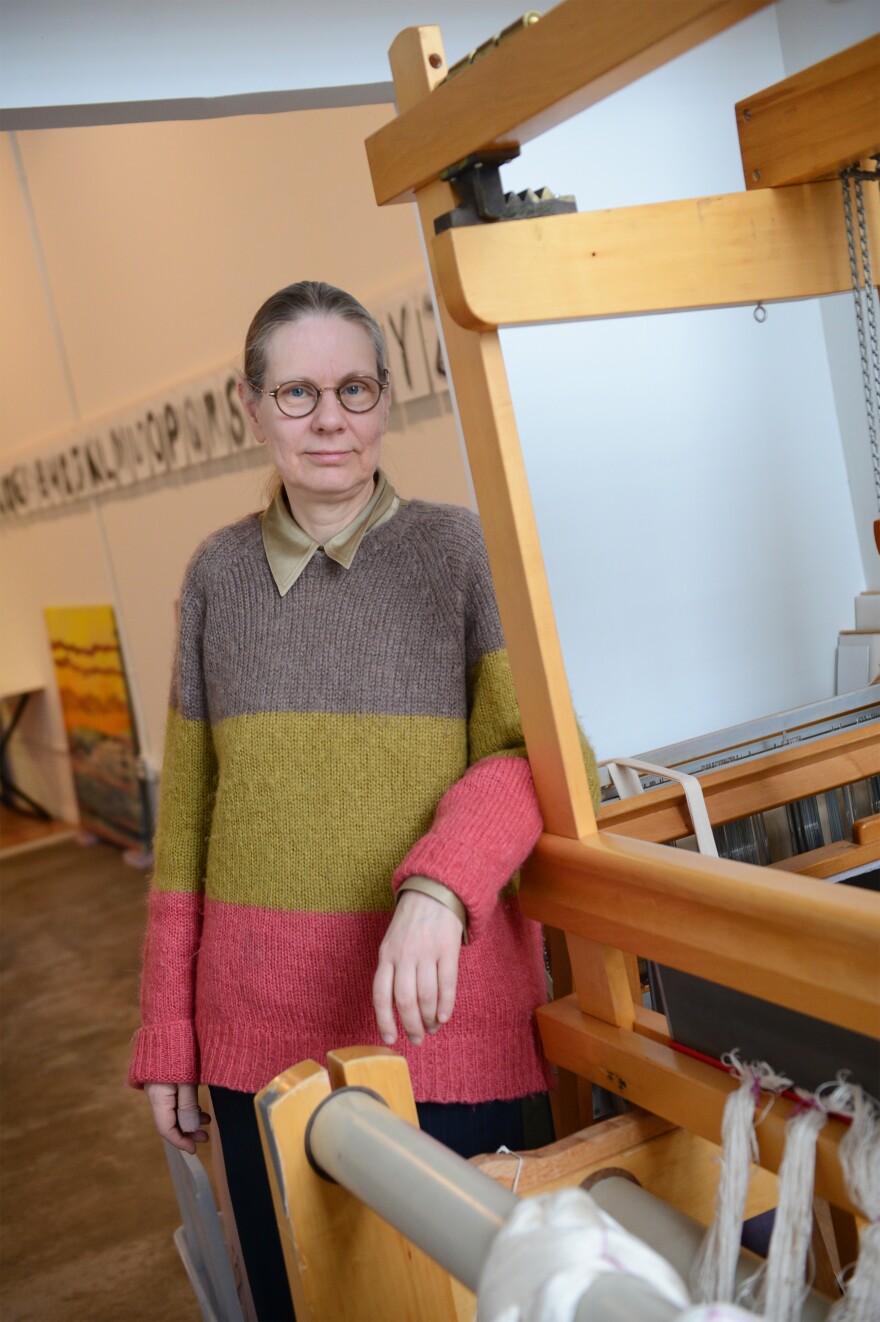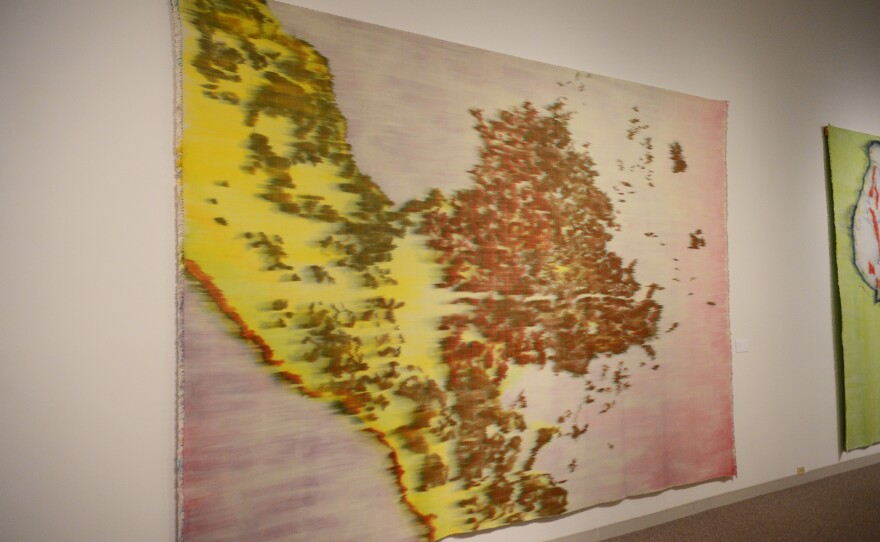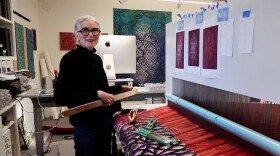Though Hildur Ásgeirsdóttir Jónsson has lived in Northeast Ohio for decades, she maintains a connection to Iceland that inspires her art. During frequent visits, she photographs the country’s diverse landscapes – mountains, ocean, deserts, flowing lava – taking note of the shapes, colors and light.
Using her photos as a guide, Jónsson paints silk threads with dye before weaving them together on her loom, creating abstract representations of the landscapes in textile form.
From a distance, Jónsson’s works may look like traditional paintings on canvas hanging on the gallery’s walls. It’s only up close that the intricate details of her weaving technique are revealed.
The Kent State University Museum spotlights the beloved alumna in a solo exhibition, “Micro/Macro,” with more than 30 works that reflect the varied landscapes of Jónsson’s native Iceland.
“She’s one of the most successful artists to come out of the textile program,” said Sara Hume, the museum’s curator. “I was really interested in the story of her origins in Iceland and ... also the way she works. It’s kind of an interesting blend of very traditional techniques with her own spin on it.”
Discovering fiber art
By the time she was about 6 years old, Jónsson had learned to knit.
“In Iceland, it’s required that you do handicraft in school,” Jónsson said. “You learn how to sew and knit and crochet.”
Though interested in many aspects of the arts from a young age, Jónsson didn’t think she could make a career out of it. She chose architecture as her first area of study when she arrived at Kent State University in 1983.
But her creativity kept calling.
Two years later, Jónsson transferred to the Cleveland Institute of Art to pursue an interest in painting. Discovering textiles as an artform was purely accidental.

“It was kind of a fluke,” Jónsson said. “It was literally the night before school started, and I needed to pick an elective in my second year.”
While looking through the schedule of offerings, she noticed a fibers course. Given her familiarity working with yarn, it seemed like a reasonable fit.
“I took the course and learned how to weave,” she said. “And I just kind of found my place there.”
While at CIA, Jónsson studied under longtime professor of fiber Tina Cassara, who encouraged Jónsson to keep weaving even as she took time off from school following the birth of her first child.
“When she realized I wasn’t going to come back anytime soon, she brought over a loom and said, ‘You’ve got to keep weaving,’” Jónsson recalled. “I’ll never forget that.”
Jónsson did stick to the artform, returning to Kent State to earn both bachelor’s and master’s degrees while studying under renowned professor of textiles Janice Lessman-Moss.
Developing her style
During graduate school in the mid-‘90s, Jónsson said she began to find her path as an artist. She experimented with different materials and textures, eventually adding her love of painting to the mix.
“I’m a weaver, but a painter too,” she said. “I create two surfaces with yarn, all laid next to each other. One is horizontal, one is vertical and I paint on both of them as if they were a canvas and then weave them together.”
The warp, she explained, is the yarn that’s threaded into the loom and runs vertically while the weft is the yarn that runs horizontally back and forth.
Jónsson’s works vary in scale. Some of her largest pieces in the exhibition are more than 10 feet in length.
“The largest pieces take about four or five months,” she said. “The smallest one, maybe a couple of weeks or so. Threading the loom is probably the most time-consuming part of it.”
While a career in art didn’t seem like a viable path earlier in her life, Jónsson found success as a textile artist, exhibiting throughout the United States and in other countries.
“You never know what's ahead. One thing leads to another,” she said. “I'm very lucky that I was able to do it. And it's a lot of luck, not just talent.”






